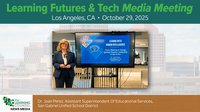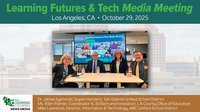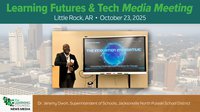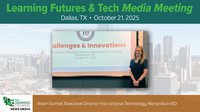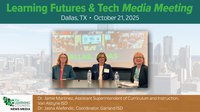K–12 education in the United States is still largely executed through a factory model, with the teacher as the central decision hub. Every teacher is expected to plan lessons across academic standards that are frequently updated, build instructional sequences, and deliver them to mixed-ability groups. This arrangement creates enormous inefficiencies, both human and financial, that ripple across the entire education system.
How inefficient is this system?
- Overproduction of lesson plans
Across the country, ~3.7 million teachers duplicate effort daily. Each one is designing lessons, hand-picking resources, and mapping to standards. The same lesson on photosynthesis or fractions might be built tens of thousands of times in parallel, with no compounding benefit. - Churn from shifting standards
State and district academic standards change frequently, triggering revision cycles. Teachers are forced into continuous re-planning instead of focusing on instruction and student support. - Limits on scalability
Teachers’ time is split across planning, instruction, grading, and student mentoring. Lesson planning consumes disproportionate bandwidth, limiting their capacity for high-value human teaching work. - Fragmented quality
Instructional quality is uneven, depending on each teacher’s time, training, and resource access. Even in well-resourced districts, there’s no guarantee of consistency across classrooms.
The Burden by Subject and Grade
The workload multiplies when examined across the core four subjects: math, ELA, science, and social studies.
- K–5 teachers cover all subjects for 180 days. That equates to ~720 unique lessons per year per teacher.
- 6–12 teachers specialize, but the complexity deepens: a high school science teacher may manage 3–4 course preps (biology, chemistry, physics), each with sequenced labs, assessments, and specialized equipment prep.
| Subject | K–2 | 3–5 | 6–8 | 9–12 |
|---|---|---|---|---|
| Math | Daily numeracy, operations | Fractions, decimals, early algebra | Algebra, geometry, probability | Algebra I/II, Trig, Calculus, Stats |
| ELA/Reading | Phonics, decoding, guided reading | Reading comp, grammar, writing | Argumentation, research, lit analysis | Literature, rhetoric, critical writing |
| Science | Inquiry basics, simple life/earth science | Ecosystems, simple physics | Physical science, bio basics, labs | Biology, chemistry, physics, lab reports |
| Social Studies | Community, maps, simple history | U.S. history, civics | World history, government | AP Gov, econ, doc analysis |
Multiply this across millions of classrooms, and the inefficiency is staggering.
The Financial Cost Burden
Consider the financial weight of duplicative effort:
- Teacher prep time: If even one hour per day of teacher time is devoted to lesson planning (many report 2–3 hours), that’s roughly 540 hours per teacher per year. At an average teacher salary equivalent of ~$40/hour (including benefits), that’s $21,600 of labor cost per teacher annually devoted to lesson building.
- System-wide cost: Multiply by 3.7M teachers, and the hidden annual cost of lesson duplication is upwards of $80 billion per year.
This does not account for lost instructional quality, the cost of teacher burnout, or attrition linked to workload stress.
The Leadership Dilemma
If the costs are so clear, why hasn’t the system evolved? The answer lies partly in leadership philosophy and politics.
- The empowerment paradox: Many administrators believe teachers should be “empowered” to create their own lessons. While well-intentioned, this often leaves teachers burdened with duplicative work instead of supported with a strong foundation of shared resources.
- Political contention: Any attempt at “normed” lessons on a statewide or national scale quickly becomes controversial. What is taught, how it is framed, and which perspectives are included inevitably draw criticism. Human judgment, bias accusations, and political divides make leaders reluctant to push for standardized lessons, even when efficiency demands it.
This tension—between local autonomy and systemic efficiency—has paralyzed large-scale reform, keeping schools locked in the factory model.
Toward an Ecosystem of Efficiency
Instead of duplicating the same work in millions of silos, schools could adopt an ecosystem approach that redistributes roles across human and digital actors. This would create efficiencies and unburden teachers at the same time, while not entirely removing the autonomy of teachers in terms of what they use. It’s a perfect middle ground, but at scale.
1. Centralized + Modular Digital Curriculum
- Pre-built, standards-aligned lesson objects housed in AI-curated libraries.
- Standards updates flow through the system automatically.
- Teachers select and adapt resources/materials rather than rebuilding them.
Note that most larger districts have been doing this for some time, although not necessarily mandating course framing, lesson purposes, and pacing with only resource tweaking by individual teachers.
2. Role Shift for Teachers
- Teachers act as navigators, facilitators, and mentors.
- Time is freed for high-value human work: feedback, discussion, project-based inquiry, and relational support.
This is the holy grail for unburdening teachers and attracting more to the profession. This recenters teachers into being human and doing the real teaching they usually once envisioned before becoming a teacher.
3. Time AI and Dynamic Cohorting
- AI manages pacing and cohorts, allowing students to progress individually while grouping at optimal intersections.
- Teachers focus live attention where students benefit most: lab work, debates, critical thinking exercises.
This type of AI, advanced calendaring/scheduling built for schools, is the only type of AI that allows a rearrangement of how the use of spaces and mingling in distance (hybrid) engagement works seamlessly so that human teachers are used dynamically, on-demand, and students could be wrapped in from anywhere-to-everywhere while flexibly being on campus or off.
4. True Administrative Dashboards
- Adding AI Agents, AI-Infused learning management and many AI-Infused crafted learning content modules with an Omni-AI Core as a cap means schools can see progress in real-time.
- Adding all systems such as HR, Finance, even busing and food prep, means a school can query an Omni-AI Core or allow voluntary observations of the Core that give leaders action levers they have never had before.
Imagine a statewide or countrywide pool of shared teaching talent. A master chemistry teacher in California could deliver advanced lessons virtually to students in rural Nebraska, while a gifted history teacher in New York could lead seminars accessible nationwide.
In addition, fractionalized expertise could be the true definition of “individual” in individual education plans. Students in underserved areas would gain access to top-tier instruction without relocation, while teachers could expand their influence and professional impact. The dimensions of equity take on whole new meanings.
Schools could contract fractions of a teacher’s time, spreading specialized knowledge across multiple institutions rather than relying on every district to fill every expertise gap. This “geo-distance sharing” aligns naturally with digital learning and AI-cohorting, transforming teaching talent from a localized commodity into a shared national resource.
The lesson planning savings in an ecosystem view would be enormous. Even if centralization and digital tools reduced lesson planning time by 50%, the system could reclaim $40 billion annually in teacher labor hours.
Attrition of teachers would also be reduced. By reallocating workload, an ecosystem-enabled set of enterprises would ease burnout, reducing costly turnover (est. $20k–$30k per teacher replaced).
From Factory to Networked Ecosystem
The current model is akin to a factory floor where each worker is handcrafting the same widget independently. An AI-enabled ecosystem approach resembles a networked system, where lesson production is industrialized and modular, while teachers apply their scarce human capital to uniquely human tasks.
The payoff is both educational—better alignment, personalization, and quality—and financial—tens of billions in potential savings that can be reinvested into student support, teacher development, and innovation.
The leadership challenge is real: empowerment and politics make centralization difficult. But with the right balance of shared digital infrastructure and geo-distributed human expertise, K–12 can move beyond its factory legacy and into a new era of ecosystem efficiency.
These are the real questions:
Will leaders lead towards real personalization, real teacher unburdening, real efficiency or cling to the distributed local-only monoliths?
Can leaders build and stand-behind complete pathways of learning despite probably attacks and criticisms that would inevitably come from every sector?
Can teachers give up total autonomy in order to get a more focused and flexible role?
How does one school, one district, one State or even one teacher get started?
***



